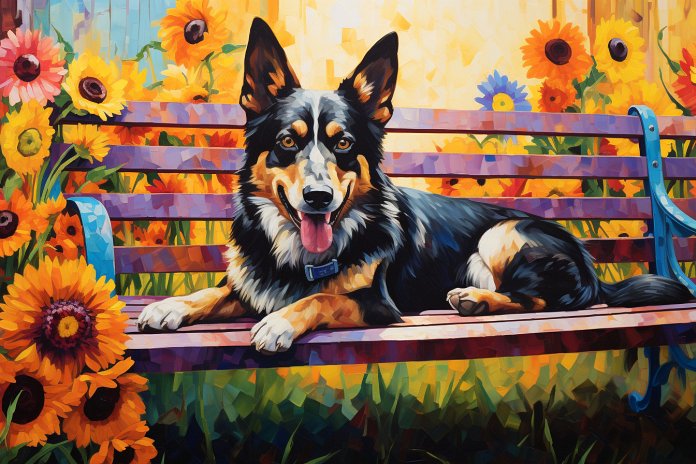
It can be amusing to see our small Chihuahuas acting like arrogant rulers of the house, demanding attention and treats. But where does this arrogance come from in a domesticated dog? Arrogant dogs can be pushy, dominant, and rude, demanding attention and not getting along with other dogs. They may act like they are the leader of their family pack and become aggressive towards visitors. This behavior can be a result of insecurity, lack of socialization, or the dog being spoiled by their owners. It’s important for dog owners to set boundaries and provide guidance to prevent their dogs from becoming arrogant.
Signs of Arrogance in Dogs
Some signs that a dog may be feeling arrogant include growling, jumping up, howling, sniffing, freezing their body, raising their back hair, and showing their teeth. Other signs include being dominant with other dogs at the park, getting jealous when their owner gives attention to another dog, loving to be pampered, not allowing strangers in the home, lunging at visitors, and displaying aggressive behavior.
History of Arrogant Canines
Arrogance in dogs may have stemmed from their ancestors, wolves, who live in structured packs and have an alpha leader. In ancient times, dogs were revered as gods and were owned by nobility. Dogs like the Shar-Pei and Weimaraner have historical connections to imperial families and European nobility, which may have influenced their perceived arrogance.
The Science of Arrogant Dogs
While it is believed that dogs do not possess complex emotions like pride and arrogance, some research suggests that dogs may be capable of feeling pride. Dogs’ brains are similar to those of 2-3-year-old children, who can feel pride in their achievements. However, more scientific evidence is needed to fully understand the emotions dogs are capable of.
Training Dogs to be Less Arrogant
Arrogant dogs can learn to behave in a more acceptable manner through positive training methods. Lack of social skills, genetics, and upbringing can contribute to a dog’s arrogant behavior. Aggression in dogs can be caused by anxiety and stress. It is important to address the underlying causes of arrogance and aggression in dogs and provide them with proper training and socialization.
Conclusion
Arrogance in dogs can be amusing but also problematic. Understanding the root causes of arrogance in dogs and providing proper training and guidance can help prevent and address this behavior. Dogs are loyal and loving companions, and it is our responsibility as their owners to ensure they are well-behaved and respectful members of our families and society.
“Teaching an arrogant dog humility is like raising the Titanic – it takes patience and persistence, but it’s worth it in the end.”

Tips & Things to Know
1️⃣ Recognize the signs of an arrogant dog: Some signs include growling, jumping up, howling, sniffing, body freezing, back hair on edge, and exposed teeth. Other signs may include being dominant with other dogs, controlling their family pack, getting jealous when their owner gives affection elsewhere, loving to be pampered, not allowing strangers in the home, lunging at visitors, and displaying aggressive behavior.
2️⃣ Understand the origins of arrogant dogs: Arrogance in dogs can stem from their ancestral ties to wolves, as well as historical associations with nobility and reverence. Certain breeds, such as the Shar-Pei and Weimaraner, are more commonly associated with arrogance due to their past roles as protectors and companions to royalty.
3️⃣ Training techniques for lessening arrogance: If your dog displays arrogant behavior, it may be due to a lack of social skills or understanding of acceptable behavior. Positive training methods can help teach them how to interact with other dogs and people. Additionally, understanding the underlying causes of aggression, such as anxiety or fear, can help address and manage arrogant behavior.
Frequently Asked Questions, Answered ✅
1. What are some signs that a dog might feel arrogant?
– Growling, jumping up, howling, sniffing, body freezing, back hair on edge, exposed teeth.
2. How did dogs end up with arrogant or dominant behavior?
– Dogs have ancestral ties to wolves, who live in a structured pack with an alpha leader. Disrespecting the alpha is not tolerated.
3. Can dogs feel pride and arrogance?
– While research suggests that dogs have the cognitive age of a 2-3-year-old child and may not fully grasp the concept of pride and arrogance, there is some evidence to suggest they can feel these emotions.
4. How can you train an arrogant dog to be less arrogant?
– Dogs can be taught with positive methods to behave in an acceptable manner. Socialization, genetics, and training all play a role in a dog’s behavior.
5. What are some reasons a dog might be aggressive or combative?
– Aggression in dogs can be caused by factors such as lack of spaying or neutering, health issues, hormones, and fear.